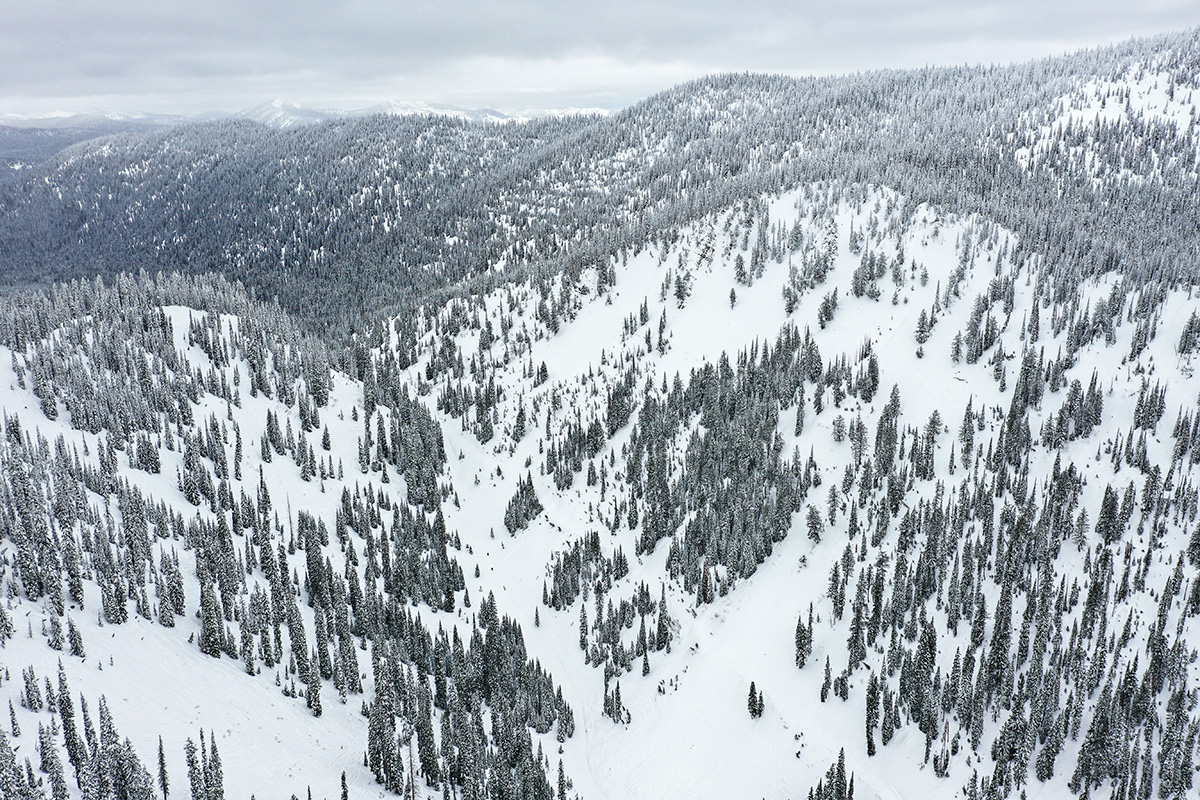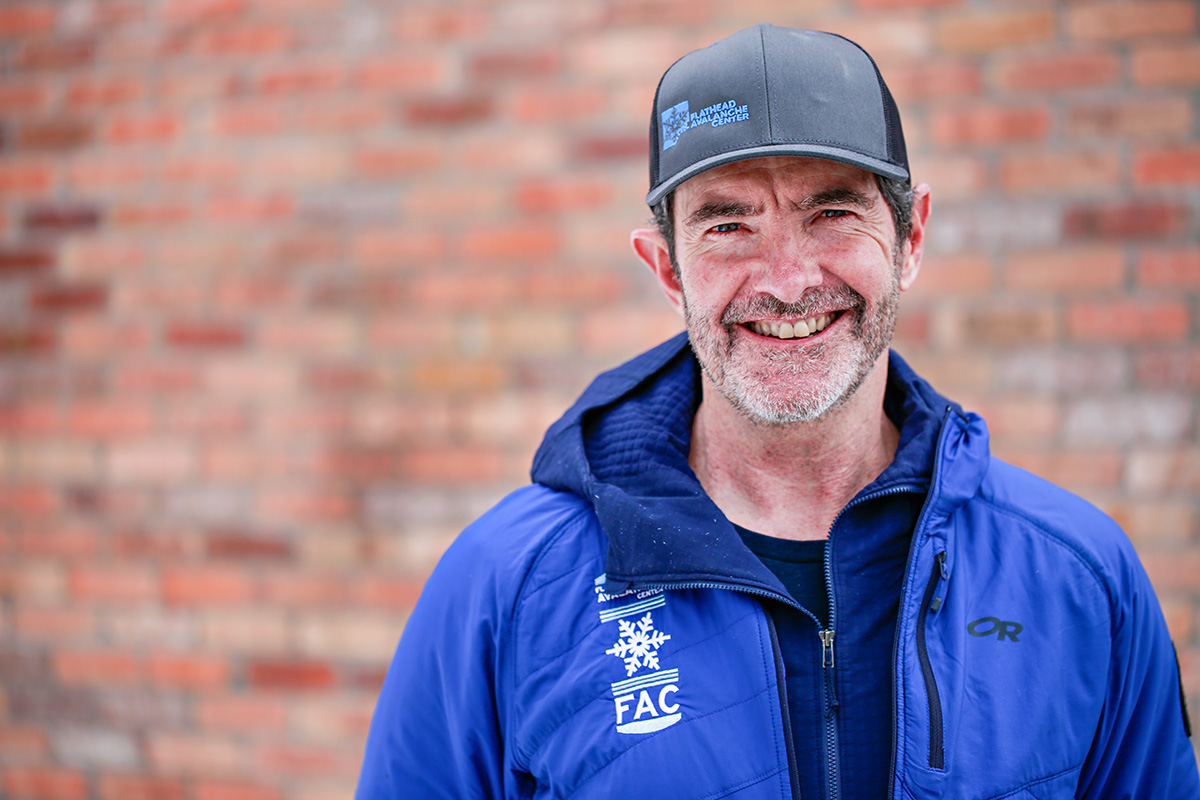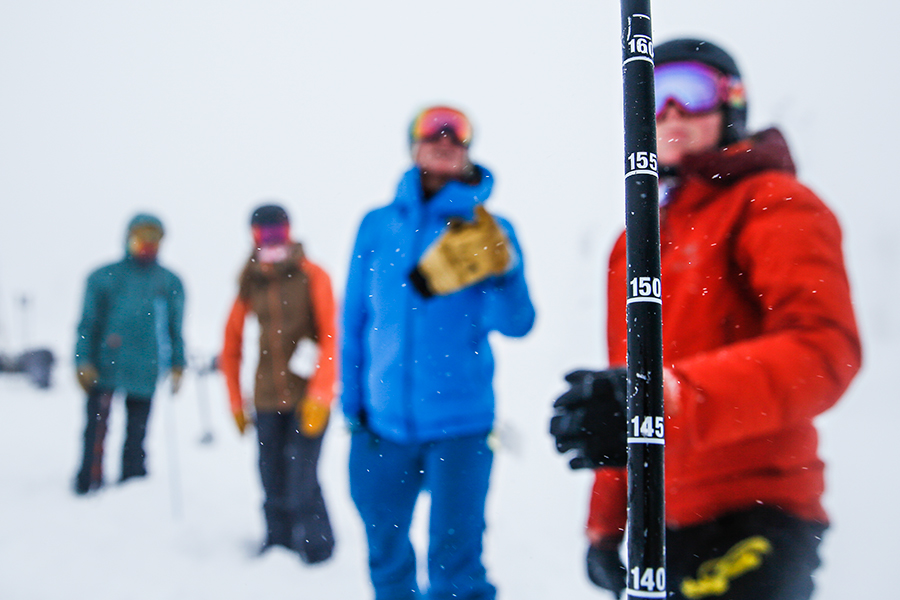An Unforgiving Winter
Avalanche fatalities nationwide this winter have already surpassed yearly averages, while the increasing ages of victims reveals experience does not necessarily equal expertise
By Maggie Dresser
Before 59-year-old Dave Cano and his four snowmobile partners headed out for a day of riding in the northern Swan Range on Feb. 6, they read and discussed the morning avalanche forecast to ensure they would head to safe terrain. They chose to ride in the trees of Wounded Buck Creek, where the avalanche risk was lower.
But at some point, Flathead Avalanche Director Blase Reardon said it appears they got pushed into higher terrain. While they weren’t directly on top of steep, exposed avalanche terrain, they managed to remotely trigger a slide from beneath it.
Reardon says the avalanche probably broke more than 200 feet above the party, although a full investigation could not be conducted due to a storm during and following the avalanche. Officials don’t know how wide the slide propagated, but Reardon says it was likely hundreds of feet, far away from the safe zone that they thought they were in and much wider than they likely expected.
“If I have their route right, the first real avalanche slope they came to, they triggered,” Reardon said. “It hit them from above … They had very little warning.”
The avalanche knocked all five riders off their sleds, which were then tipped over and partially buried. But only four of them were able to dig themselves out. Once the sleds were unburied and operational, they began a beacon search and found Cano’s deployed avalanche airbag poking out of the snow, according to Reardon and the avalanche report.
Cano’s position was what rescuers call a “partially buried critical,” meaning part of his body was on the surface but his airway was beneath the surface. By the time his partners unburied him, Cano was already dead.
After unsuccessful resuscitation efforts, the remaining avalanche survivors rode to the trailhead near Hungry Horse and called 911. As stormy weather continued moving in, worsening already dangerous avalanche conditions, law enforcement had to wait until early the following morning to recover Cano’s body with a helicopter.
Cano is one of 31 nationwide avalanche fatalities this winter, as of Feb. 22, a number that has already surpassed the yearly average of 27.5. Of those 31 deaths, more than 20 of the victims were over the age of 40, including Cano, according to West Glacier-based U.S. Geological Survey physical scientist Erich Peitzsch.

This year’s avalanche fatalities further support a recent study conducted by Peitzsch, Whitefish-based psychologist and avalanche educator Sara Boilen and other avalanche professionals, which concluded that avalanche victims are getting older.
According to the study, “How old are the people who die in avalanches? A look into the ages of avalanche victims in the United States (1950-2018),” published in the Journal of Outdoor Recreation and Tourism, a majority of deaths occurred with backcountry users in the age 30-39 and 40-49 brackets since 1990.
“With the data we had, we couldn’t tease out why the median age increases,” Peitzsch said. “Is it because the population is getting older in general? Is it because people are settling down later? Who knows? We can speculate but we really can’t say.”
While professionals can’t say why the average ages of avalanche victims are getting older, data as far back as 1950 tells them the age trend started rising in the 1990s, likely due to improvements in gear technology allowing easier access into the backcountry. In the 2020-2021 winter, age trends are rising even higher, with many victims in their 40s and 50s.
As of Feb. 17, the median age of fatalities this winter was 49, according to Peitzsch. Montana’s other avalanche fatality, which occurred north of Big Sky, also involved someone over 40. Craig Kitto, a Bozeman resident and elementary school principal, was caught and carried in a slide in Beehive Basin on Feb. 14. The 45-year-old was partially buried and died from sustained injuries after being transported to the hospital.
Colorado is experiencing “once in a decade” avalanche conditions, with 11 deaths since Dec. 18. While the victims’ ages were not all publicly available for each incident, at least three were over the age of 40. Fatalities have also occurred in Idaho, Nevada, Wyoming, Washington, Utah, California, Alaska and New Hampshire this season.
In the six days between Feb. 1 and Feb. 6, the United States saw 15 confirmed avalanche fatalities, the most in a seven-day period since the Wellington Avalanche killed 96 people near Stevens Pass in 1910, the deadliest in U.S. history, according to the Colorado Avalanche Information Center (CAIC).
Until this year, the Flathead Avalanche Center’s forecasting region hadn’t seen an avalanche fatality since 2018 when a local physician, 62-year-old Jon Torgerson, was killed in the side country near Whitefish Mountain Resort. Before that, 36-year-old Ben Parsons died in a Glacier Park avalanche in 2017.
Without validating data, local avalanche professionals can only speculate why older and experienced backcountry users are dying instead of young, inexperienced recreationists. Reardon says a combination of factors is likely contributing both locally and nationally.
“(Snowpack) conditions are unusual (this year),” he said. “The simplest way to put it is, your usual practices aren’t enough in unusual conditions.”

In the Flathead, local forecasters say a persistent slab that formed in mid-January is the culprit for widespread avalanche activity in the area, which includes the Flathead, Swan and Whitefish ranges. After a rain event in January, a crust formed. The weather remained dry for the rest of January, creating surface hoar, a snow science term for frost, weakening the snowpack.
“The surface hoar got buried pretty intact,” Reardon said. “The surface hoar, in a lot of cases, is either on or just above that crust. That hard surface underneath makes it easier to collapse the weak layer.”
While these types of slabs are not unusual, both Reardon and Peitzsch say that this particular layer is pervasive and widespread.
“This year, it seems to be widespread for all three mountain ranges and it’s really reactive,” Peitzsch said. “Avalanches are propagating far and wide this year. It’s certainly not an anomaly, but it’s particularly reactive.”
Forecasters have intentionally triggered multiple slides in the last month that they have never triggered in the past.
“When I was out the first week in February, I was in places I first skied 20 or 25 years ago,” Reardon said. “I don’t ever remember triggering that many slabs on slopes.”

Since the beginning of February, there have been a slew of avalanche reports submitted by both forecasters and the public, more than Reardon usually sees and many of which were partial burials and near-misses. Reardon said on Feb. 19 there had been four incidents in seven days where skiers and riders had been caught and carried in avalanches.
“Our average for each year is four,” Reardon said on Feb. 19. “We’ve had 11 so far.”
Other states are also seeing a particularly weak snowpack. On Feb. 6, eight skiers in Utah were caught in a slide, killing four.
Peitzsch says Colorado is having a persistent slab problem, too, that they haven’t seen since 2012. And because it’s been nearly 10 years since the state has seen such weak snowpack, he says some experienced backcountry users may not have ever seen avalanches on certain slopes before, catching many by surprise.
“If you think about the processes, when we recreate in the backcountry we have our checklist and our habits,” Peitzsch said. “One explanation might be that people are implementing those habits and techniques, but this year avalanches are breaking farther and wider and larger. It might not be what they’re used to and it’s out of their realm of experience. That might be one reason.”
Boilen, the local psychologist, hypothesizes that in addition to a particularly weak snowpack, human behaviors are another factor. Since experienced backcountry users may not be used to seeing an unusual snowpack, she says people are probably heading to zones that have been historically safe in their personal experiences.
“There’s a difference between experience and expertise,” Boilen said. “We know the brain is particularly bad at predicting the future and the place we look to predict the future is our past. If I’ve slid on the snow 1,000 times and never had an incident involving an avalanche, my brain will suggest to me there’s no reason to expect an avalanche.”
This reasoning also may suggest why fatalities are happening among older people. As an avalanche educator, Boilen has noticed that many inexperienced backcountry users have a heightened level of fear after they take an Avalanche Level 1 course. But she says that fear wears off over time as recreationists continue to emerge from the backcountry unscathed.
“We all make mistakes and, generally speaking, none of us know how lucky we are,” Boilen said. “We rarely know when we’ve gotten away with something.”

After the pandemic led to a surge in outdoor recreation, many predicted that inexperience would be the cause of avalanche fatalities this winter. But last year, the CAIC conducted a study and found that most people involved in avalanches had intermediate or advanced levels of expertise, and avalanche education did not reduce avalanche exposure. Those individuals also tended to be older, Reardon said.
But Reardon suspects the pandemic might be causing “decision fatigue” in some people.
“I think people may have become numb to risk taking with COVID,” Reardon said. “A better way to put it, the attention they can give to decision making is plain worn out. There’s so many things going on in the world and they want to do something that feels normal and free their mind.”
And between a particularly weak and reactive snowpack and folks relying too heavily on old habits, avalanches are catching a lot of people by surprise.
The rising age of avalanche fatalities suggests that many experienced recreationists might need to revisit education. If an individual hasn’t taken a class in five or more years, Reardon says it’s worth taking a refresher course.
“The fact that people with a lot of experience are getting caught, I think it would be worthwhile for people to come back for some training and sharpen their skills,” Reardon said.
Friends of the Flathead Avalanche Center (FOFAC) has offered multiple new classes this season, including tune-up, companion rescue and awareness classes, but Reardon says participation has been low.
“I think in the avalanche education world, we need to do a better job at reaching older folks,” Boilen said. “Otherwise, we’ll continue to see atrophy in their knowledge.”
Despite a plethora of experience among some older backcountry users, Boilen stresses that difference from expertise.
“If expertise is this accumulation of facts, knowledge, skills and rigorous training, then experience is just memories,” Boilen said.
For the latest forecast and to view snowpack and avalanche observations, visit www.flatheadavalanche.org.